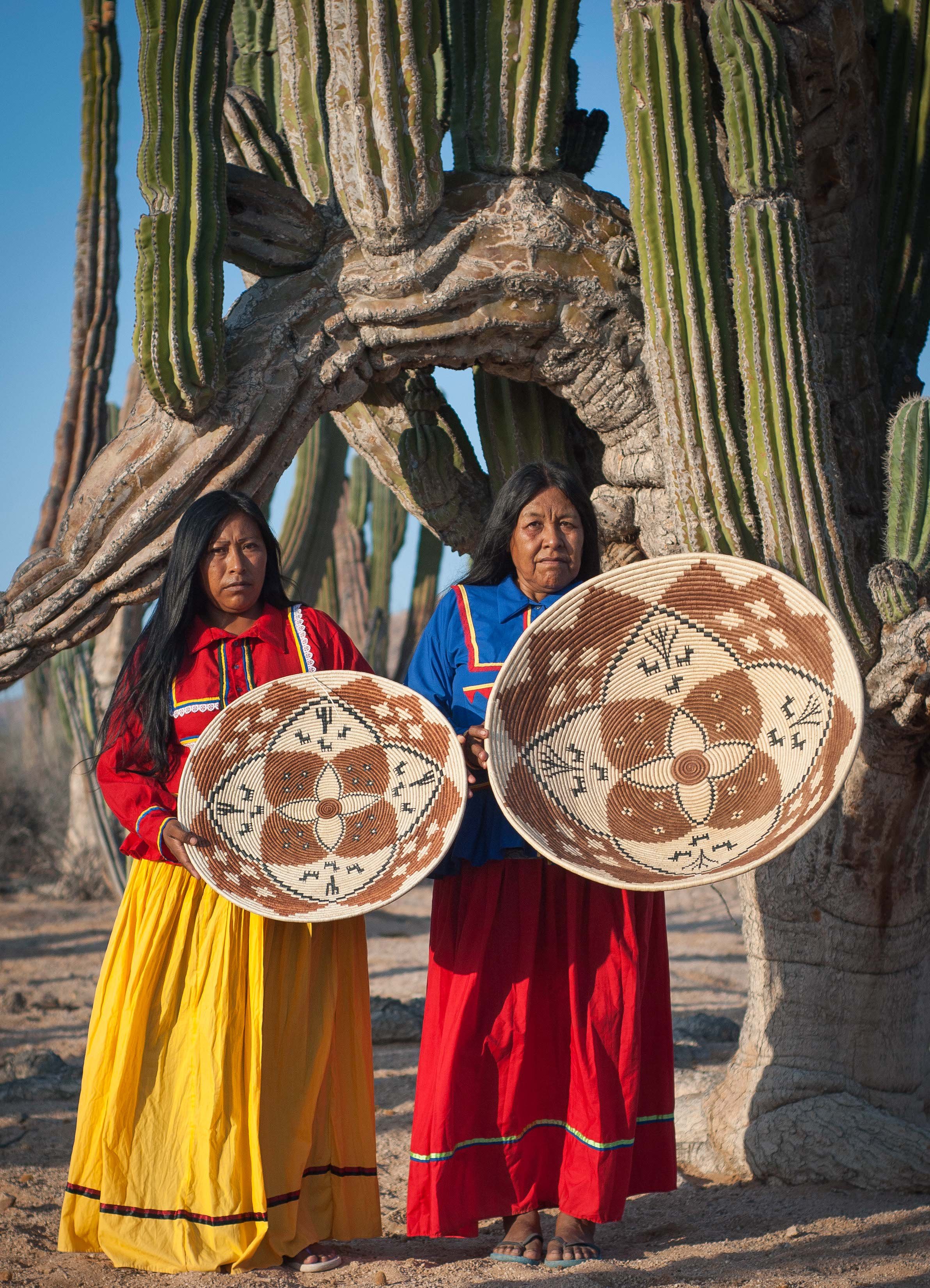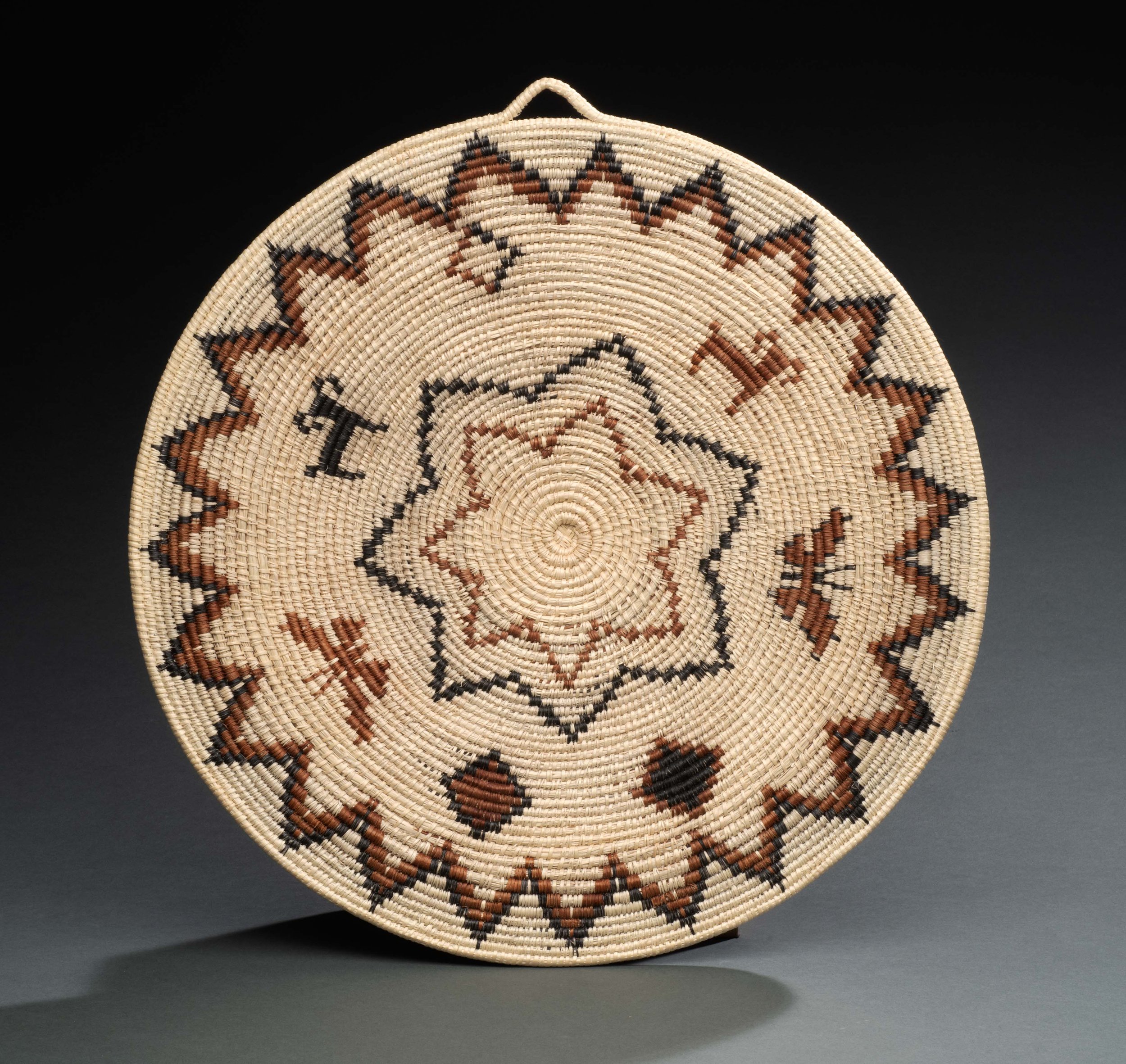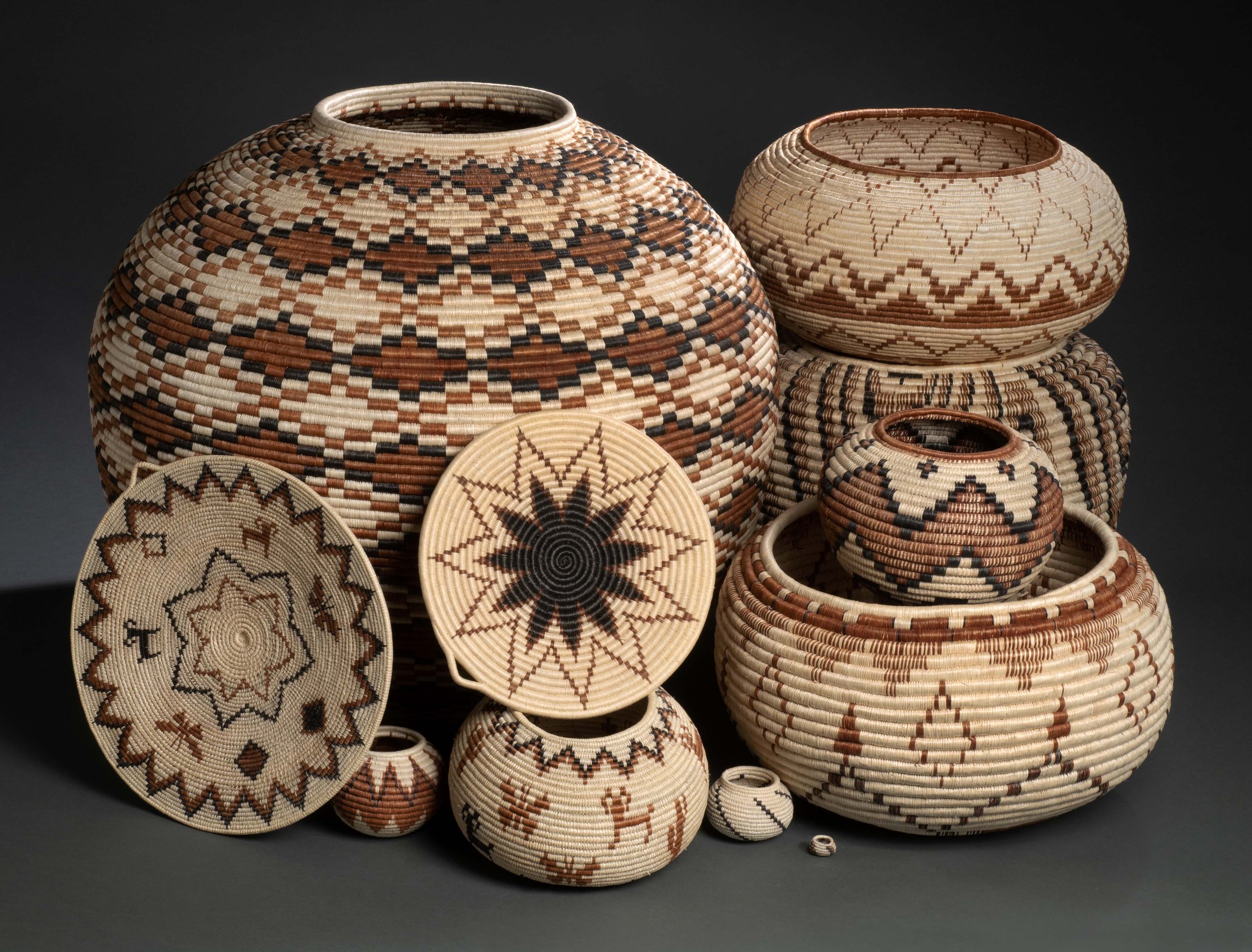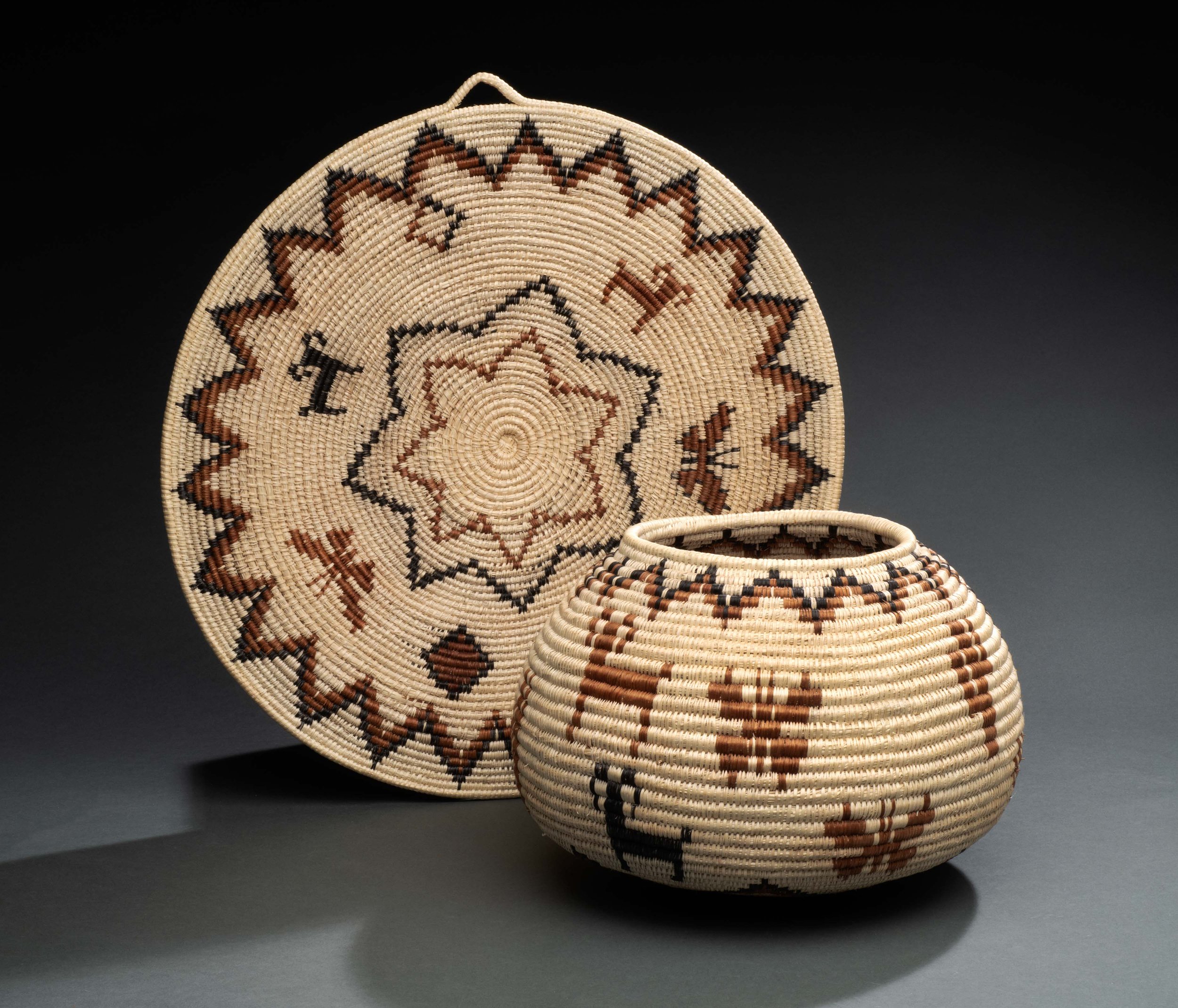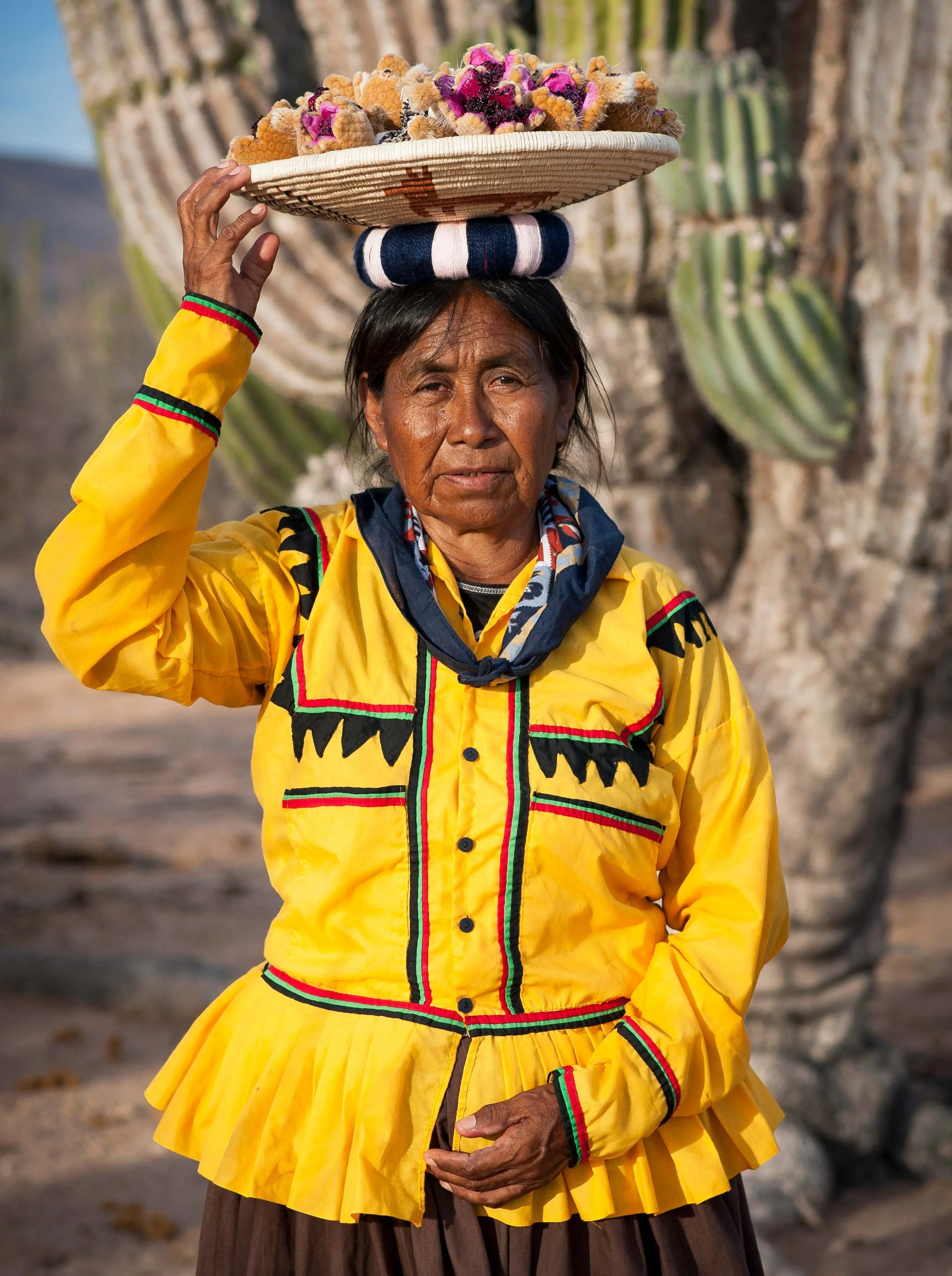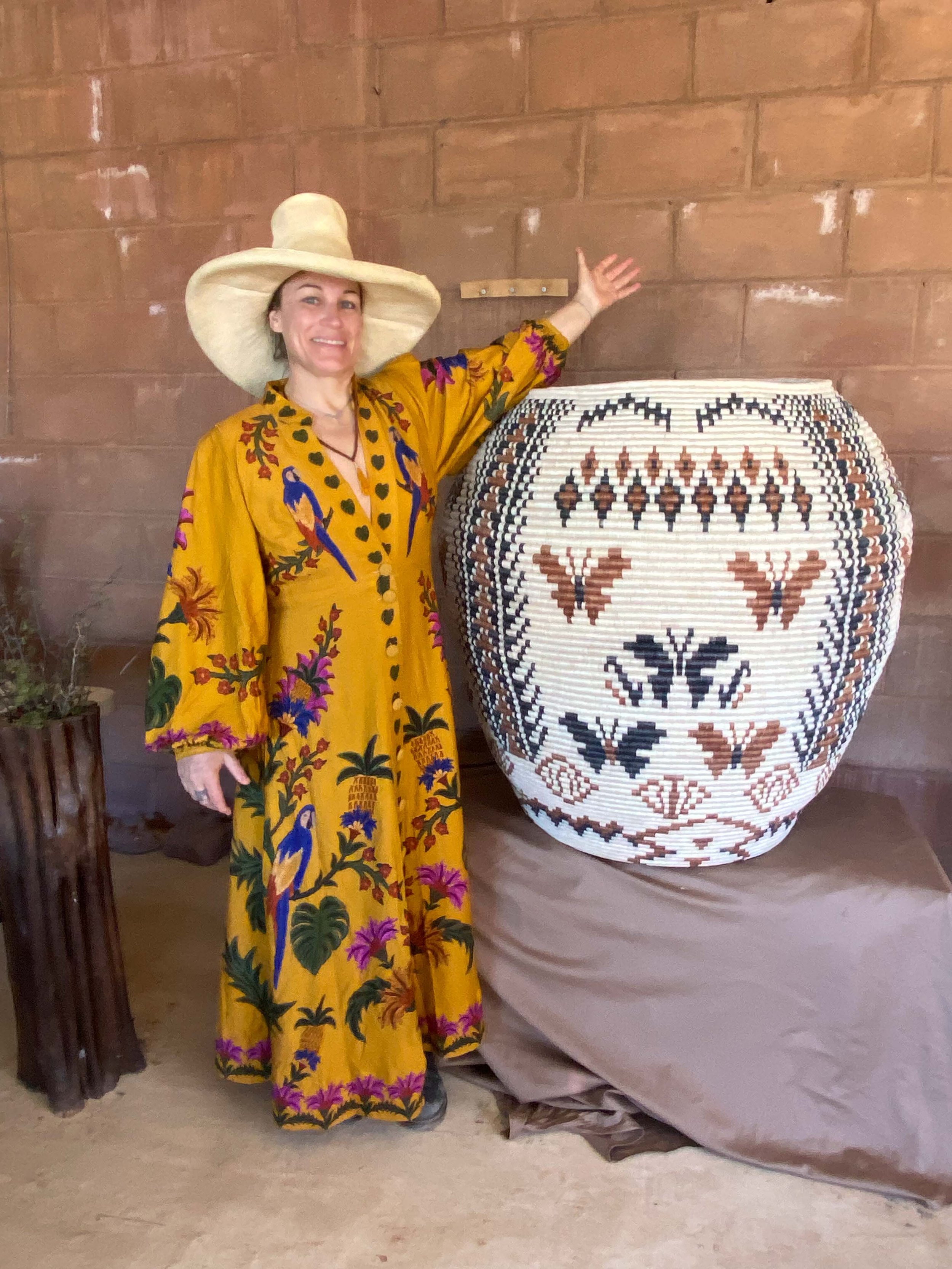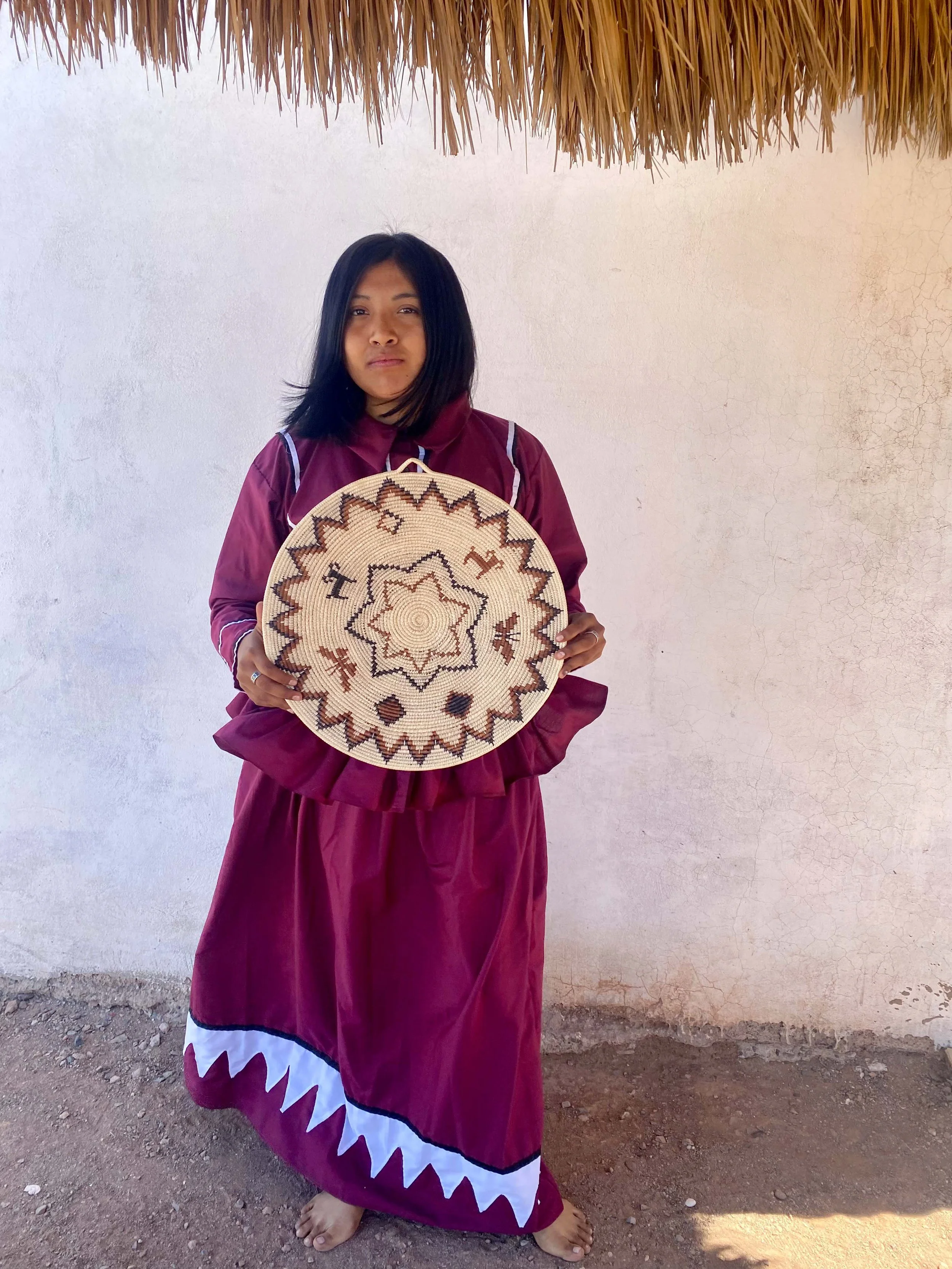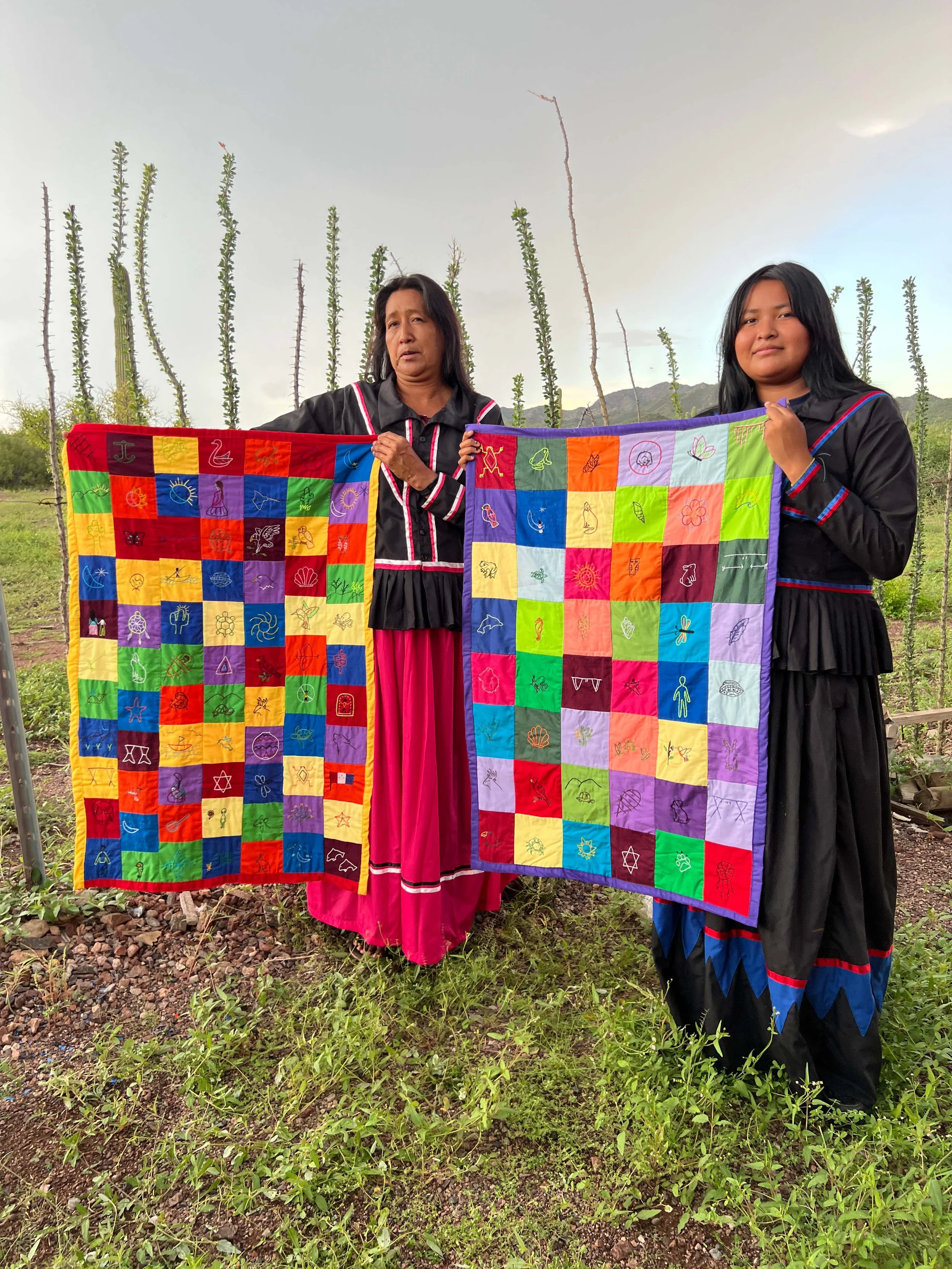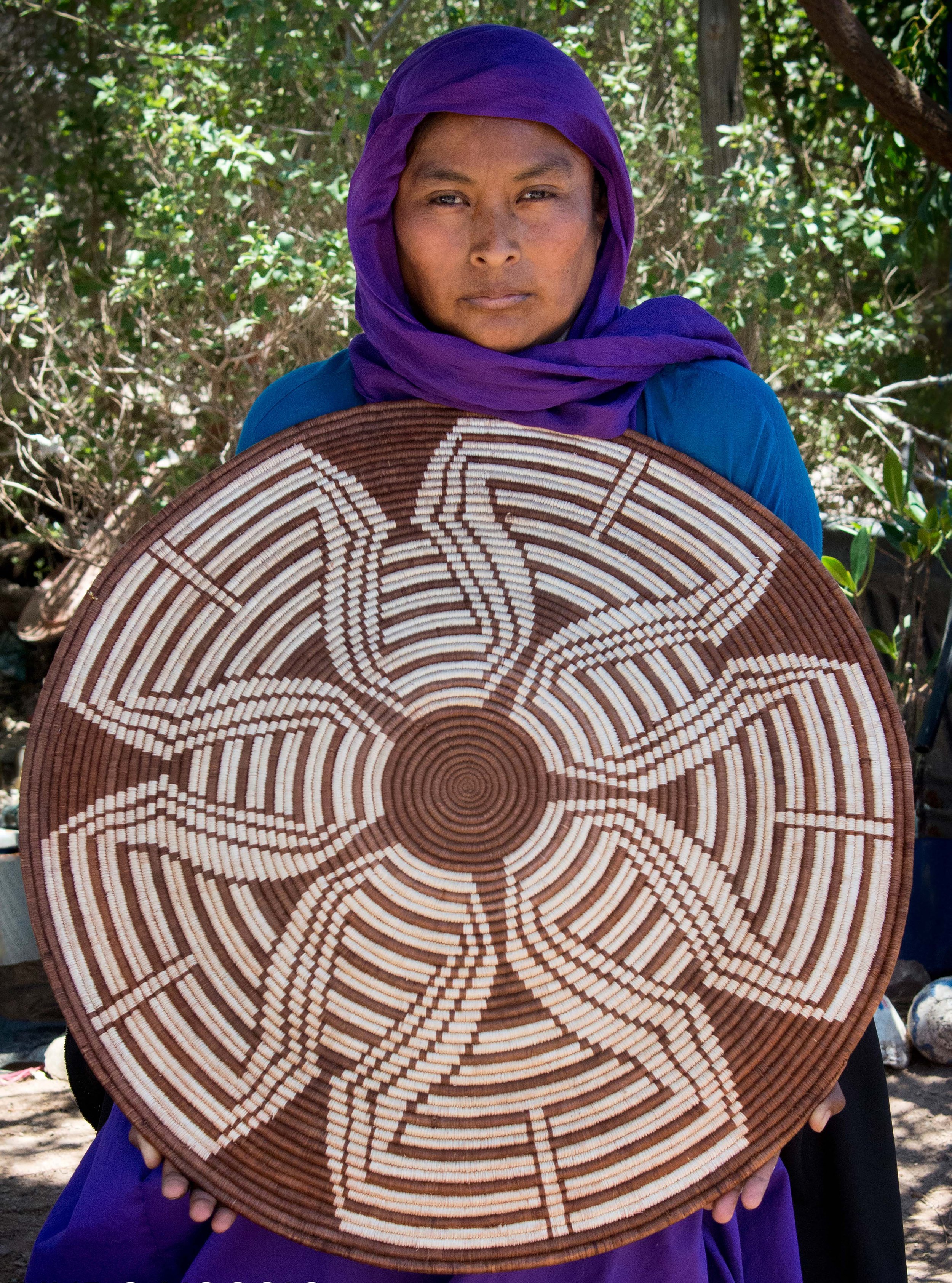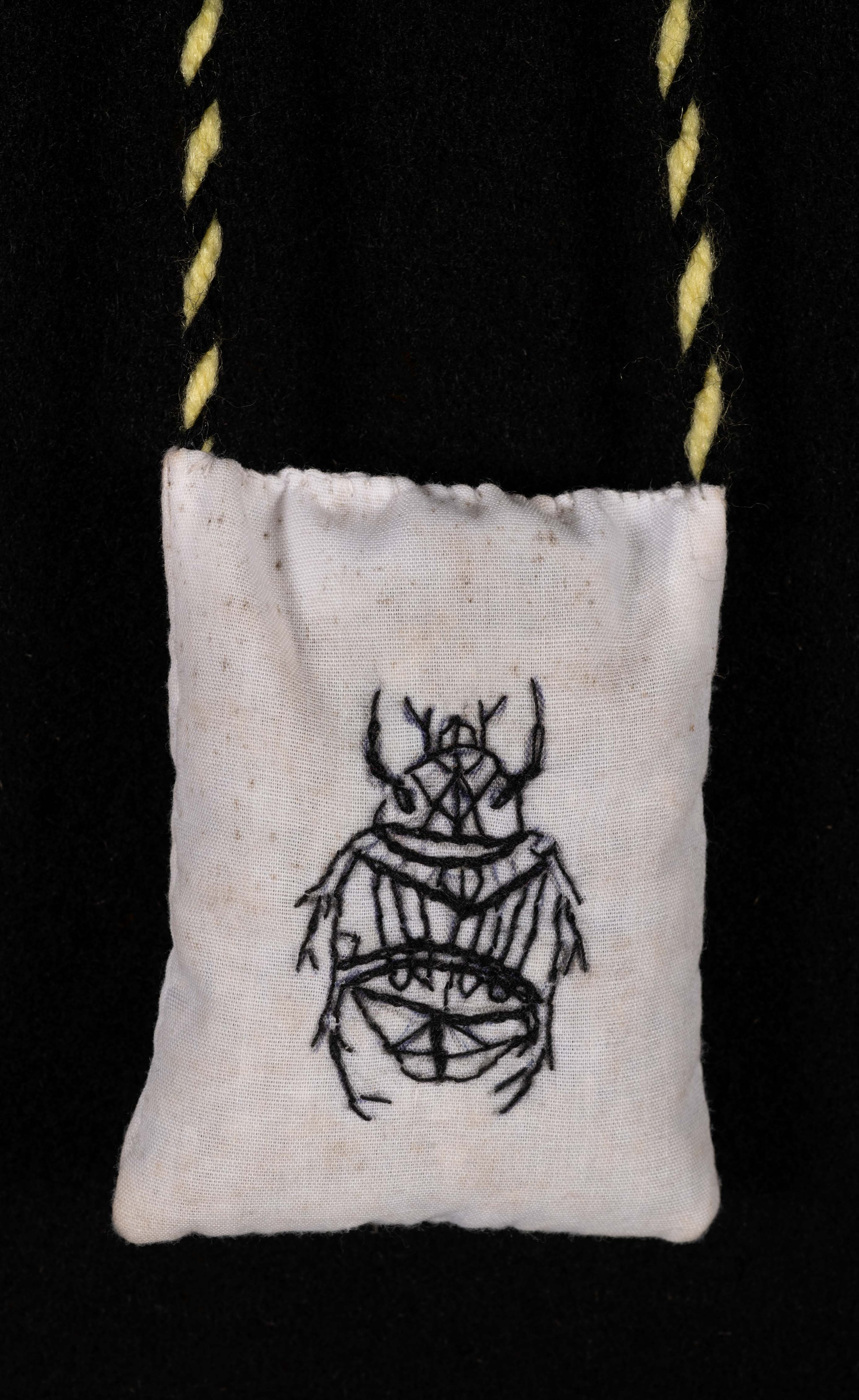Saaptim
Sonoran Saaptim
In Sonora, Mexico the Indigenous Seri/Comcáac are creating stunning baskets from Limberbush. Saaptim’s baskets range in size from one inch to over sixty inches, a sight you have to see to believe. The arduous process begins with going into the surrounding desert to harvest the Limberbush/Torote, a Sonoran shrub that has been used extensively in basketry by the Seri and O’odham. Torote is split and dyed before artisans began to make their baskets with nothing but their hands and sharpened deer antlers. The designs featured on Saaptim’s baskets are a blend of old and new. Some come directly from the artist’s imagination, while others are reflective of the regional landscape and Seri cosmology. Common motifs include deer, saguaros, and butterflies.
The larger baskets, or Saaptim as they are called, can take up to five years to complete. When working on large-scale baskets, the Seri build a house for the basket known as a "Casita de Chuza" (Haco Haemza). This allows the women to gather over a number of days, sing songs to the basket, and bless it as the Godmother of the basket finishes the final row. Basketry connects them not just to the natural environment, but to the ancestral cultural practices of the Seri that the Spanish conquest nearly decimated. Traditionally used for utilitarian purposes like food storage, these baskets are now available for purchase, providing Seri women with financial mobility.
The artist cooperative Saaptim has partnered with Sennel, a nonprofit organization that is providing additional materials to the Seri to further their artistic trade. Under Sondra Goodwin’s guidance, Seri women also create large quilts, an idea that originally stemmed from the Seri’s small cloth pouches they use to carry desert sage. The quilts are adorned with designs that are emblematic of petroglyphs.
Photographs by: Edmundo Kossio


